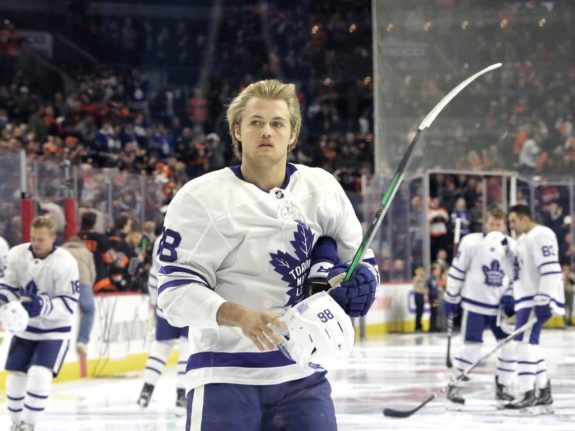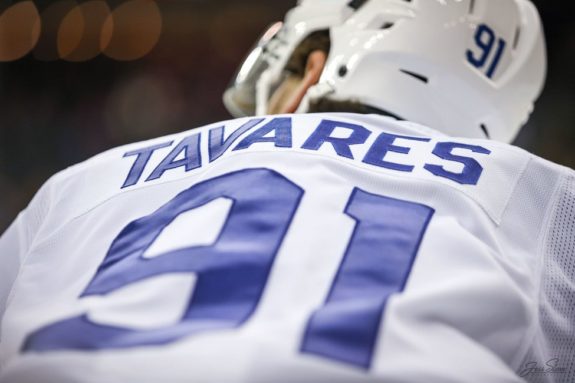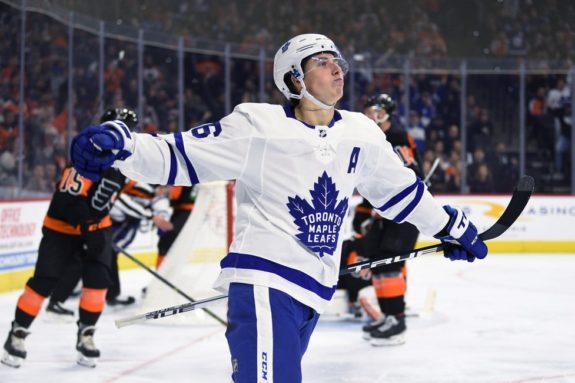As part of my research when I put together posts about the Toronto Maple Leafs, I read dozens of daily posts by others who write about the Blue & White. My take is that, whether you agree with their analysis or not, the writers who cover the Maple Leafs are quite good. They are interesting, provocative, usually thoughtful, and offer Maple Leafs’ fans lots to chew on. I hope my own work adds value to the work of the entire community of writers.
Related: What Happens if the Maple Leafs’ Nick Robertson Is Really Good?
In this edition of Toronto Maple Leafs News and Rumors, I want to weigh in on two posts written by other Maple Leafs hockey commentators. First, I’ll share suggestions that young forward William Nylander might not be appreciated enough. Second, I’ll share what I think is interesting information about the financial impact of the NHL’s suspension of the 2019-20 regular season in response to COVID-19 on the real (take-home) salaries of the four highest-paid Maple Leafs players.
Item One: Does William Nylander Deserve More Love from Maple Leafs Fans?
Yesterday, Maple Leafs hockey commentator Nick Barden of The Leafs Nation wrote a thoughtful post supporting Nylander as a valuable member of the team’s roster. I agree with Barden’s analysis. As the rumors fly about different trades the Maple Leafs might make to solve the team’s defensive woes, a number of names keep emerging as players the Maple Leafs should trade. Nylander’s name is one of them.

Barden wonders if it’s a good idea to trade one of your team’s best players, especially if that player scored 31 goals last season and is the cheapest of your top four forwards. To put Nylander’s value into perspective, Barden points out that only three NHL players last season (David Pastrnak, Mika Zibanejad, and Nathan MacKinnon) scored more goals than Nylander and cost their team less money.
Barden also shares advanced statistics to show that Nylander had the most high-danger goals for with 1.78 per 60 minutes in the NHL. [To better understand what a “high-danger scoring chance” is, if a “scoring chance” is defined as a shot taken from an area of the ice where goals are most likely to be scored – and then given a value of 1, 2, or 3, depending upon the “danger” of scoring on the defensive team – a “high-danger scoring chance” is any shot attempt with a final value of 3 or higher. That means there’s a higher likelihood of that shot going in.] Simply put, that means Nylander shoots from places where he has the best possible chance of scoring. He’s smart that way.
Related: Who is the NHL’s Top Goaltending Prospect?
In addition, Nylander’s reputation is that he’s the best perimeter scorer on the team and, as Barden notes, “even — one of the best in the entire league.” In other words, the 24-year-old Nylander’s a good offensive player who’ll likely get better. Barden adds that 61 players in the NHL make more money than Nylander, and only 22 of them scored more points than he did in 2019-20.
Barden then rhetorically asks if fans appreciate this youngster enough.
Item Two: How Much Do the Maple Leafs’ High-Salaried Players Really Make?
One really interesting Maple Leafs hockey commentator is KatyaKnappe, who writes for Pension Plan Puppets. In a longer article earlier this week, she wrote about the impact of COVID-19 on new salary structures and contracts given out in the age of the flat salary cap.
The article discussed the signing bonuses that the Maple Leafs regularly gave to top players – including John Tavares, Auston Matthews, Mitch Marner, and Nylander. The point of such contracts has been to attract players by offering a higher percentage of the contract’s payout earlier than later. Thus, players gain a huge financial advantage from the team.

However, within the context of the pandemic and without regular income from fans who attend games and buy merchandise, etc., many owners and organizations are bleeding money. Because the NHL’s collective bargaining agreement (CBA) is built upon a labor philosophy that players and owners should share costs, risks, and revenue, it includes a mechanism to ensure teams and players achieve a 50-50 split of hockey-related revenue. That mechanism withholds a percentage of players’ salaries – which is called escrow – during the season so as to achieve the agreed-upon revenue-splitting.
What interested me in the article was the impact of the players’ escrow upon their salaries. Specifically, the article outlined how the Maple Leafs’ high-salaried players were impacted financially by escrow. As far as players’ salaries go, their 2019-20 salaries were paid out in full in a final paycheque issued during the pandemic pause in July. That entire final paycheque went right into the escrow account, and the new CBA Memo of Understanding (MOU) signed in early July called for the entire escrow account to be paid out in full to the owners.
However, because NHL organizations lost so much money, the expectation is that when a final accounting is done on this season as it always is, players would owe even more than the 20% of their salaries already paid in because NHL revenues had bottomed out.
Related: Turning Pro vs. Playing College Hockey: Which Is Better?
For 2020-21, escrow is again set in the MOU at 20% of salaries. In addition, all NHL players are deferring another 10% of their salaries to owners. Although that 10% will be repaid over three years, it still erodes the value of front-loaded, signing-bonus laden contracts in the short term.
Here’s what it looks like for the big-four salaried Maple Leafs players – but it also impacts other players, who will also lose the same percentage of their salaries.
Salary Lost to Escrow and Deferral
| Player | Annual Salary | Salary Lost to Escrow in 2019-20 | Salary Deferral in 2020-21 |
| Auston Matthews | $11.634 million | $3,180,000 | $4,770,000 |
| John Tavares | $11 million | $3,180,000 | $3,600,000 |
| Mitch Marner | $10.893 million | $3,200,000 | $4,500,000 |
| William Nylander | $6.9 million | $1,800,000 | $1,800,000 |
As a note, escrow and the salary deferral are both calculated on Total Salary, not the Base Salary after signing bonuses have been paid. By the way, this doesn’t count income taxes paid. In fact, because of the difficult financial nature of the NHL’s teams, the escrow amount for the 2020-21 season will likely never be paid back to players and most of the money lost for this coming season will never return.

As an aside, for anyone like me who’s interested in knowing more about the taxes hockey players pay, Kevin McGran wrote a nice article in The Star just over a year ago explaining the income tax situation for players who play for Toronto teams. If you’re interested, you can find it by searching by title. (from “For Marner and Leonard, it pays to know a few contract shortcuts,” The Star, 29/06/19)
What’s Next for the Maple Leafs?
So many rumors are building about trades the Maple Leafs should make to improve the team. At the base of those rumors is the conviction by fans and hockey commentators that the offense really isn’t the problem. The real issue is the team’s defensive play.
Related: Maple Leafs News & Rumors: Babcock, Parayko, Bracco & More
Regardless of how one looks at it, the team regularly gives up more goals that it scores. That leaves the question, how can the roster be reshaped to keep the puck out of its own net?

It will be interesting to see how that issue is defined and dealt with by the team’s management. My suspicion is that, as soon as the Stanley Cup is hoisted over one team’s collective head, there will be action from the Maple Leafs. In the meantime, fans will have lots of rumors to read about.